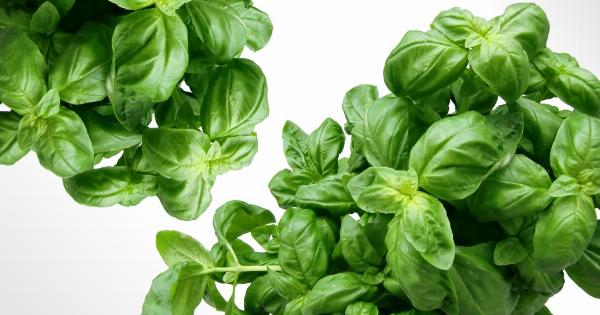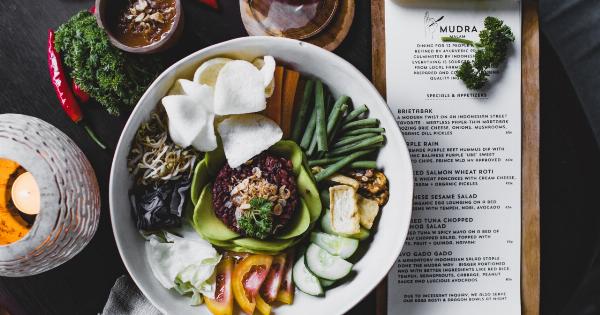Adopting a vegan lifestyle has become increasingly popular in recent years, as more and more people become aware of the ethical, environmental, and health benefits of a plant-based diet.
However, the idea of going vegan can be daunting for some, as it involves making significant changes to your daily routine and familiarizing yourself with new ingredients and cooking techniques. But fear not, because we have created a step-by-step guide to make your transition to veganism a breeze.
With the help of pictures, we will walk you through each stage, ensuring that you have all the tools and knowledge necessary to make going vegan as easy and enjoyable as possible.
Step 1: Educate Yourself
Before embarking on any significant lifestyle change, it’s crucial to educate yourself about what it means to be vegan. Familiarize yourself with the reasons why people choose a vegan lifestyle and the benefits that come along with it.
Understand the core principles of veganism, which revolve around avoiding all animal-derived products, including meat, dairy, eggs, and honey. Get to know the various health and environmental benefits associated with veganism as well.
Step 2: Clean Your Kitchen
Once you have made the decision to go vegan, it’s time to clean out your kitchen. Get rid of any animal products you have on hand, including meat, eggs, milk, and cheese.
This step is essential to eliminate any temptation or fallback options that might hinder your progress. Consider donating unopened items to a local food bank or to friends who might find them useful.
Step 3: Restock Your Pantry
Now that your kitchen is free from animal products, it’s time to fill it with vegan-friendly alternatives. Stock up on plant-based staples, such as fresh fruits and vegetables, whole grains, legumes, nuts, and seeds.
Make sure to also have a variety of vegan condiments and spices to enhance the flavor of your dishes. Additionally, consider buying plant-based milk, vegan butter, and tofu as replacements for their animal-derived counterparts. Having a well-stocked pantry will make meal planning and preparation much easier.
Step 4: Plan Your Meals
A key aspect of successfully transitioning to a vegan diet is meal planning. Start by creating a weekly meal plan, considering your favorite dishes and experimenting with new recipes.
Look for vegan cookbooks or websites for inspiration, and make a shopping list based on your meal plan. Planning your meals in advance will help you stay organized and ensure that you always have delicious and nutritious options available.
Step 5: Learn New Cooking Techniques
While some meals may be as simple as replacing animal products with plant-based alternatives, exploring new cooking techniques will expand your vegan culinary repertoire.
Learn how to cook tofu to perfection, master the art of plant-based baking, and experiment with vegetable-based sauces and dressings. Use online tutorials and cooking classes to enhance your skills and discover new and exciting flavors.
Step 6: Explore Vegan Restaurants and Cafes
Going vegan doesn’t mean you have to give up dining out. Many restaurants and cafes now offer delicious vegan options, making it easier than ever to stick to your plant-based diet outside the comfort of your own home.
Explore your local area for vegan-friendly establishments, and don’t be afraid to ask questions about the ingredients and cooking methods used. Treat yourself to a vegan meal every once in a while to celebrate your progress and discover new flavors.
Step 7: Find Support and Community
Transitioning to a vegan lifestyle can feel isolating at times, especially if you don’t have friends or family members who share your dietary choices.
Seek out support and community by joining vegan groups on social media platforms or attending local vegan events. Connecting with like-minded individuals will provide you with a supportive network of people who can offer advice, share recipes, and inspire you to stay committed to your vegan journey.
Step 8: Embrace Vegan Alternatives
As you become more comfortable with your vegan lifestyle, explore the wide range of plant-based alternatives available. From vegan meat substitutes to dairy-free cheeses and ice creams, there are countless options to satisfy your cravings.
Experiment with different brands and flavors, and find your favorites. Remember that not all vegan alternatives are created equal, so be open to trying new products until you find the ones you truly enjoy.
Step 9: Stay Informed
Staying informed about the latest research, news, and developments in the vegan community will help you stay motivated and engaged.
Follow reputable vegan blogs, websites, and social media accounts to stay up to date with new recipes, nutritional information, and advocacy campaigns. Understanding the positive impact you are making on your health, the environment, and animal welfare will keep you inspired on your vegan journey.
Step 10: Be Kind to Yourself
Finally, remember that transitioning to a vegan lifestyle is a personal journey, and it’s essential to be kind to yourself along the way. Don’t beat yourself up if you make mistakes or occasionally consume non-vegan products unintentionally.
Focus on progress rather than perfection and celebrate the positive changes you are making. Remember that going vegan is not just a diet but a lifestyle choice that promotes compassion, sustainability, and improved well-being.





























